Dushi Dining
A blend of cultures creates a taste-temping yet laid-back cuisine in Curaçao.
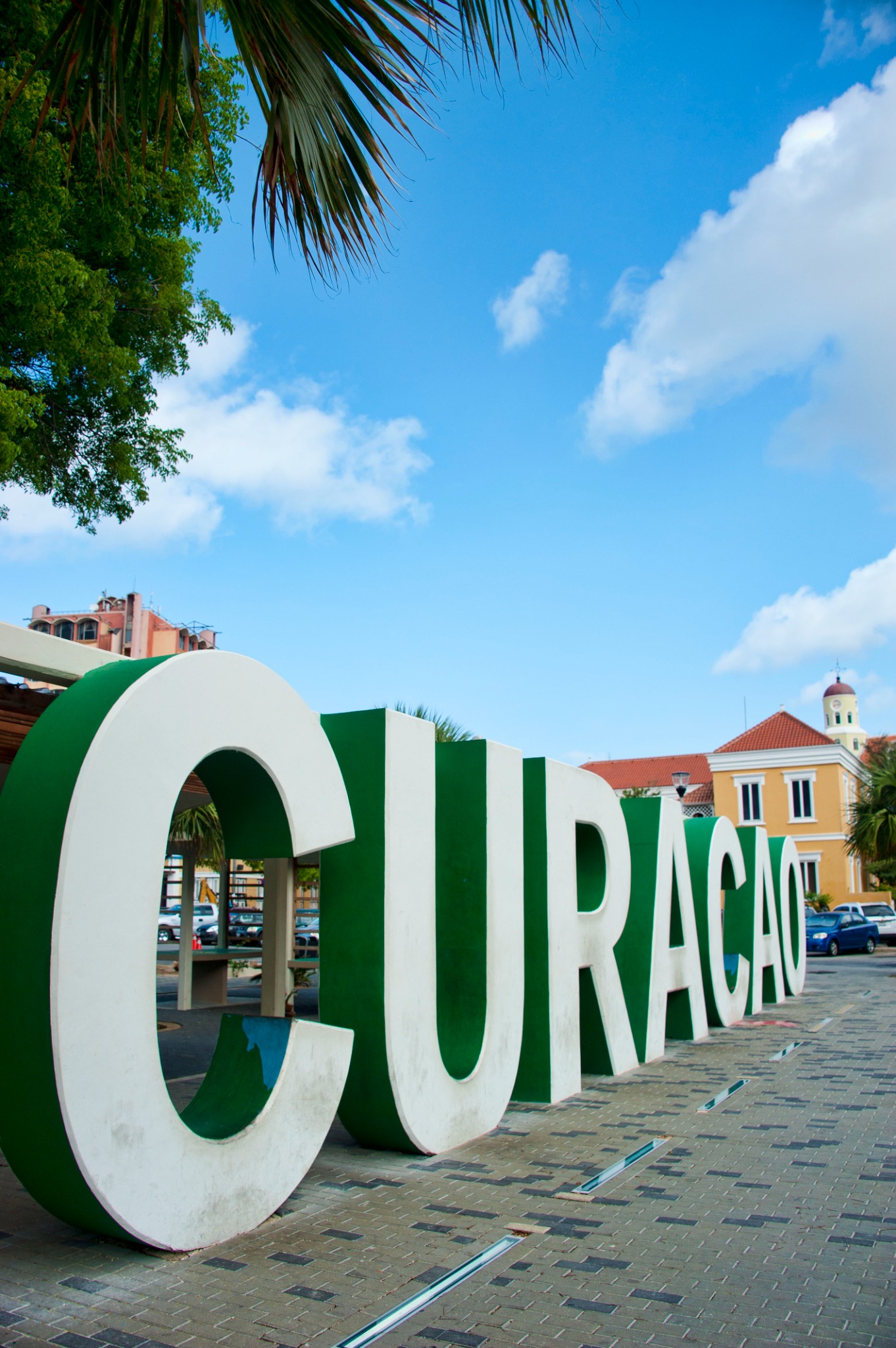
The sun is just beginning to set on a Friday evening, but the local crowds are already gathering in Curaçao’s Jan Thiel neighborhood. No, they’re not here to party at the latest club or enjoy a lively performance. They're here for one simple thing: meat — and lots of it. For down a quiet residential street overlooking the bay is one of the island’s worst-kept secrets: Equus.
Located on a private horse farm, Equus began almost 30 years ago as a weekly backyard barbecue for friends and family. As word of the homeowner’s grilling prowess spread, friends began bringing their friends, who began bringing their friends. Finally, the owner, Roger, decided that it would be easiest to build an outdoor area above his horse stables and open a restaurant. “I want everyone to have a good time,” he says, adding that “everyone is welcome to my home.” Keeping with tradition, Equus is still open only on Fridays. And just like those original get-togethers, there are no reservations and no menus.
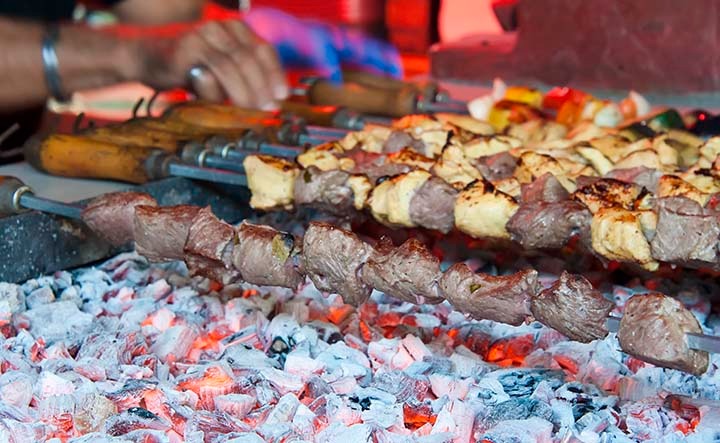
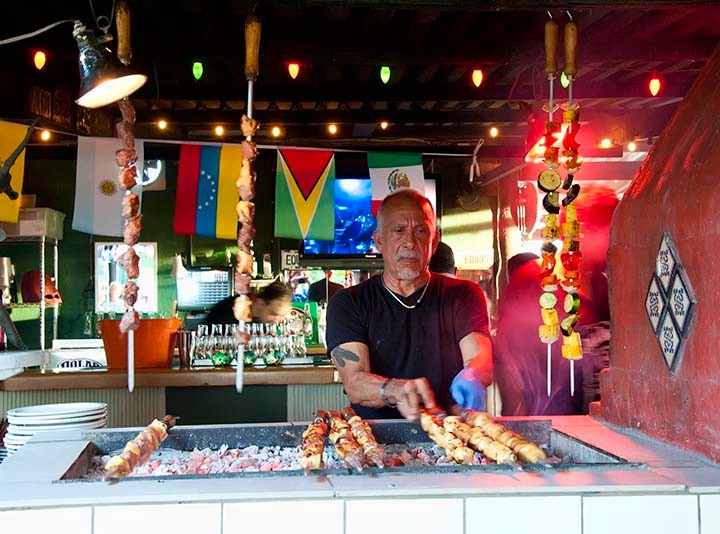
Equus offers one thing: pinchos. These long skewers of meat are grilled over hot coals by Roger himself. Pick steak, chicken or a combo skewer (there’s also a veggie skewer, in case you want something a little less filling), and grab a seat, if you can, at one of the dozen or so picnic tables. There are no plates or utensils here, and the skewers are hung above your table. Simply grab the meat with your hands and enjoy with an ice-cold Polar beer or local wine. It’s messy, it’s primal, and it’s a must-do activity when visiting this Dutch Caribbean nation.
Celebrated for its colorful buildings and unparalleled ocean diving, Curaçao, located off the northern coast of Venezuela, may be best known in culinary circles for its eponymous blue liqueur, but thanks to its diverse ethnic heritage, including Dutch, Spanish, Indonesian, Portuguese and African — the island was once a major slave-trading port — its food also makes quite a splash.
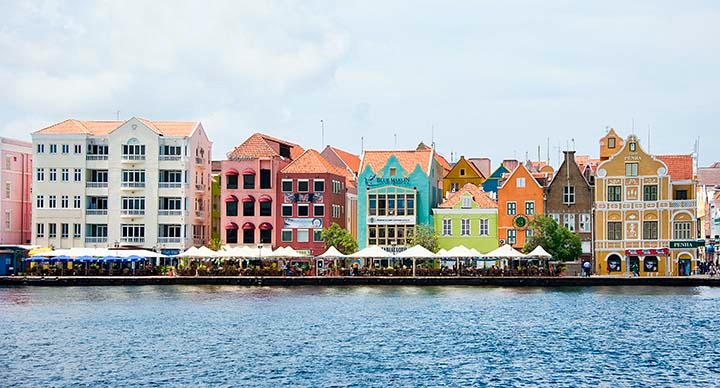
Even though Curaçao is a water-locked destination, meat rules here, from the popular pinchos to stewed goat, meat-filled tamales, beef soup, pickled pigs’ ears and stewed iguana. Even bar snacks are geared toward the hungry carnivore, with bitterballen — battered and deep-fried meat roux — being an island favorite. And then there’s the national dish of keshi yena, a hollowed-out ball of cheese, usually gouda or edam, that’s stuffed with spiced beef.
For an authentic dining experience, head to Plasa Bieu in the heart of Willemstad, Curaçao's largest city and its capital, near Waaigat harbor. In this communal food court, adjacent to the city’s iconic kaleidoscopic architecture, vendors cook local dishes over hot coals. Among the offerings are stewed goat and beef, cactus soup, iguana soup, salted pork tails and fried mackerel, among others. Plasa Bieu isn’t for the delicate diner: The decor is decidedly rundown; the air is stifling, with only ceiling fans to cool the enclosed space; and the iron pots are caked with years’ worth of burnt crust. But the meals are tasty and cheap (averaging $5 U.S. per heaping plate), and there’s no better place to mingle with and get to know the friendly locals.
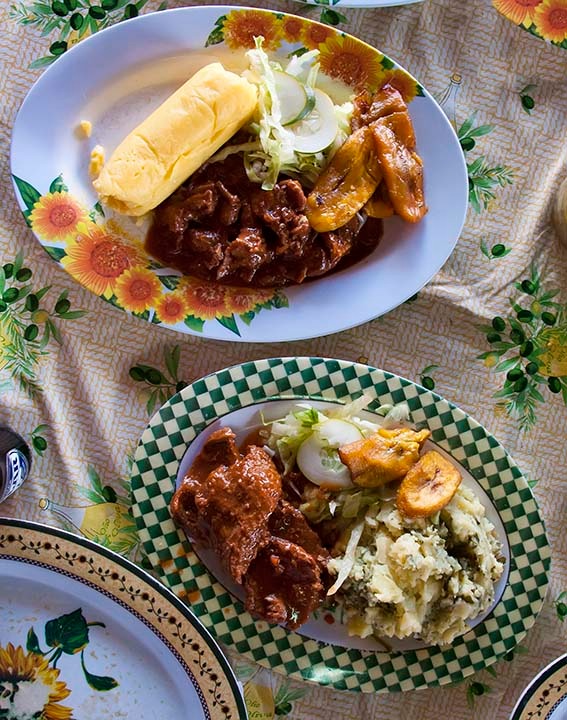
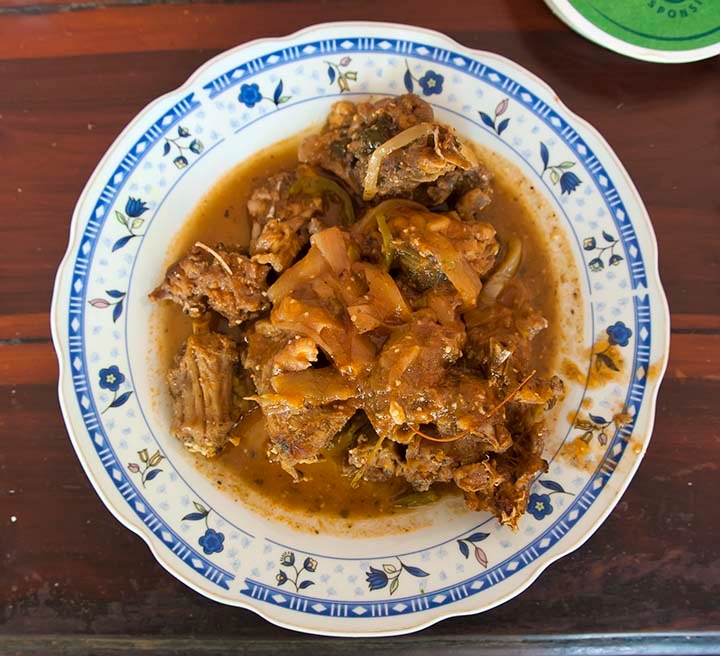
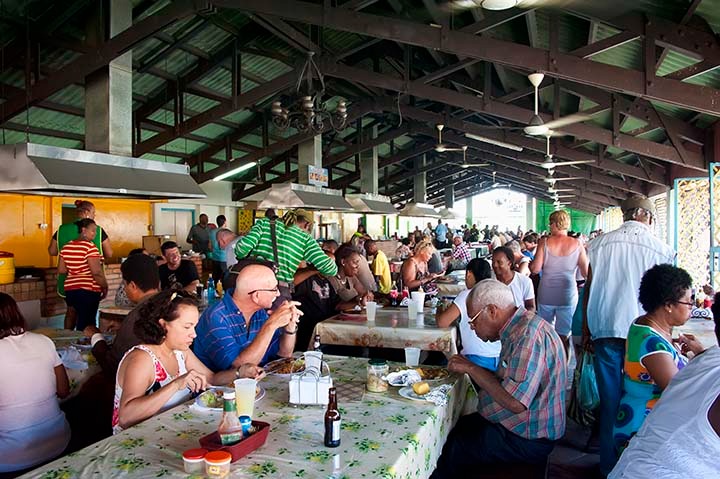
After dining at Plasa Bieu, head along the waterfront toward the Queen Emma Bridge. This pontoon bridge, which separates Willemstad’s two neighborhoods, Punda and Otrobanda, swings open to allow boats to pass through St. Anna Bay. Make sure to stop at the floating market. While most of the stalls are safely ensconced on terra firma — and where vendors hawk everything from mangoes to sides of pigs, as well as the obligatory souvenir — the market gets its name from the legion of fishing boats that line its shore. Venezuelan fisherman, many of whom are second-generation, sell their catch directly from the boats on which they live year-round.
It is here that I met Pasquale Hernandes, who has a small fish stand. “Twenty years I've worked here,” she says. And during that time, she’s lived on a boat behind her stall. I watch as she removes the scales from a pile of red snappers, her hands moving quickly as she gathers the fish and weighs them on a hanging scale. Her face is weathered and creased with time, but her eyes sparkle as she warmly greets passers-by.
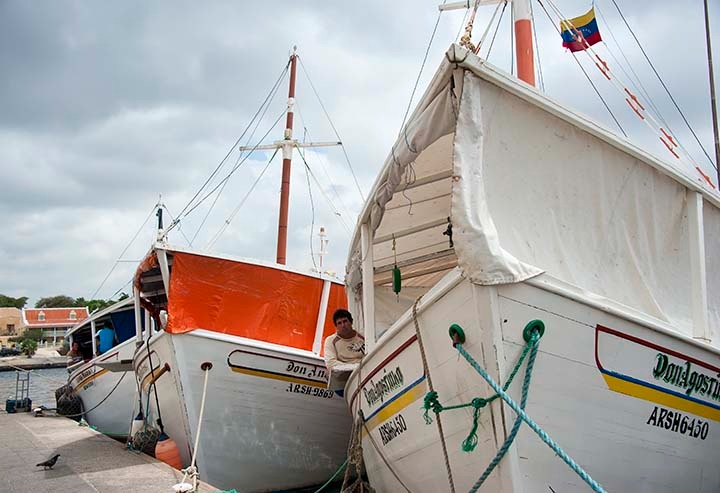
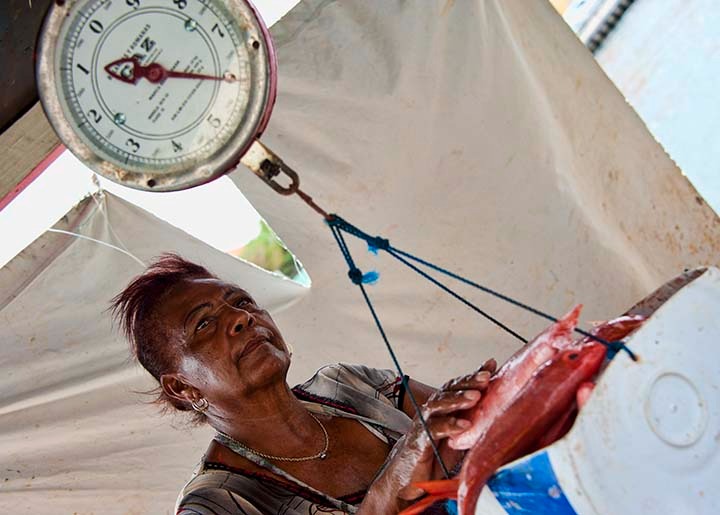
Of course, no visit to Curaçao would be complete with a colorful drink or two. But instead of blue, why not go for green? Green rum, that is. Rom Berde (Papiamento, the native language of Curaçao, for “green rum”) is an island original, and you’ll only find it at Netto Bar, a tiny hole-in-the-wall joint in the off-the-tourist-path Otrobanda neighborhood of Willemstad. Opened in 1954 by local resident Ernesto (Netto) Koster, Netto Bar has been serving its “world famous” house-made concoction since its earliest days.
The day-glo tipple looks like antifreeze and tastes like Nyquil. I ask the bartender what gives the drink its emerald hue. His response is as offbeat as the beverage. “Green.” I inquire again, “But what gives it its color?” His response? “Green.” I decide not to ask any more questions for here it’s not about the drink but instead about the experience.
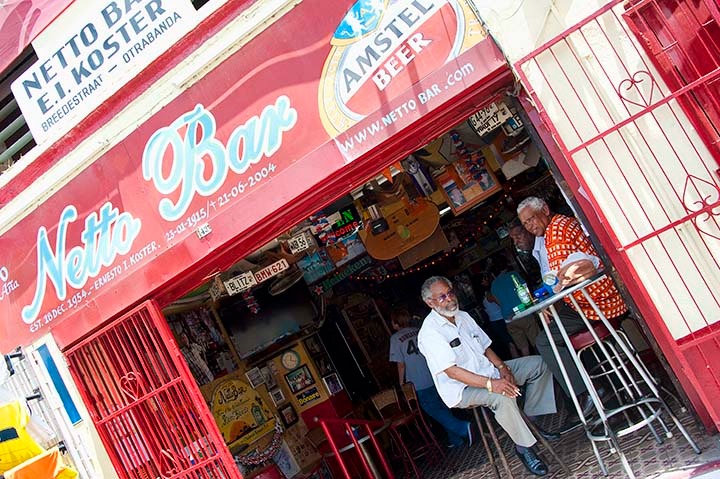

There’s a term in Curaçao — “dushi” — which translates loosely to sweet or sweetheart. Locals refer to each other and even life in general as “dushi.” It also means “delicious.” And after getting taste of all the island offers, you'll understand why Curaçao, too, is truly “dushi.”
Curaçao tourism: curacao.com/en/
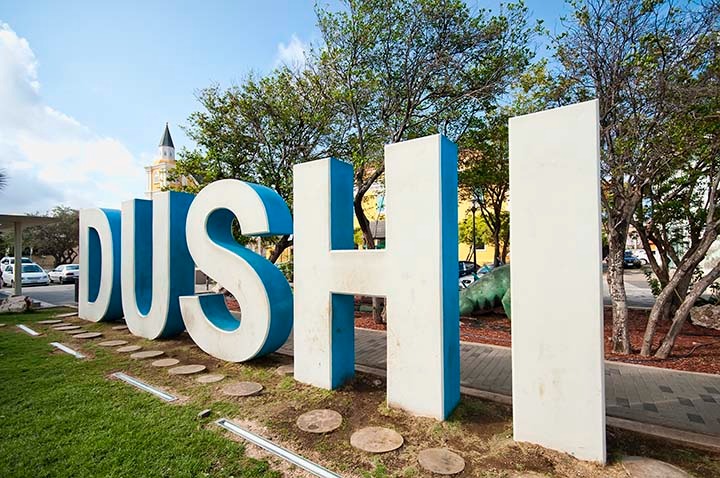
All photos by Rebecca L. Rhoades
0 Comments Add a Comment?